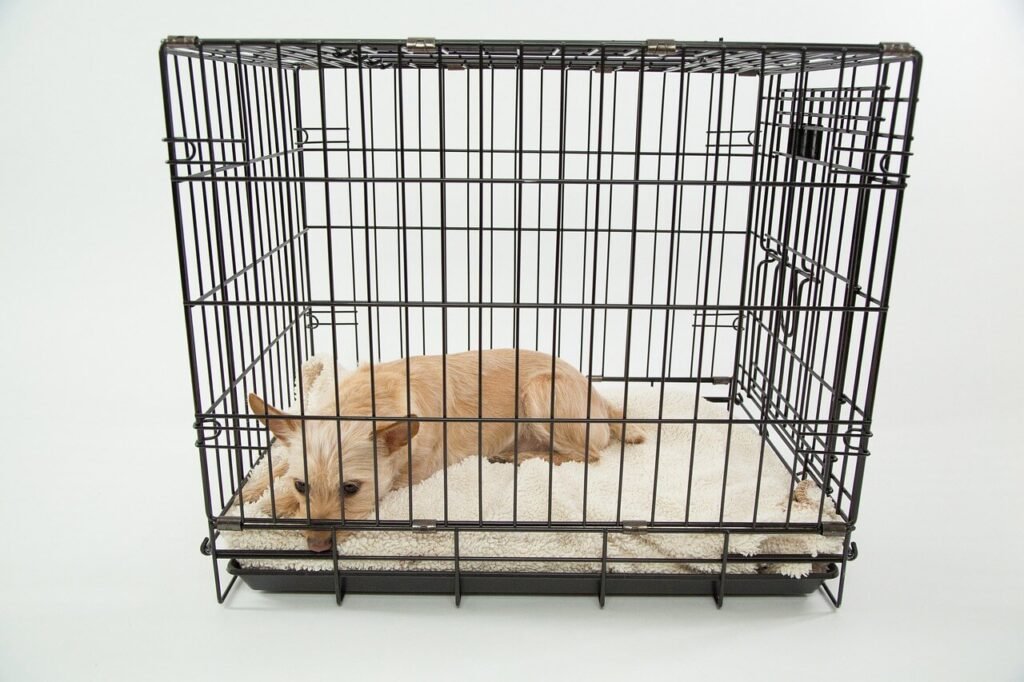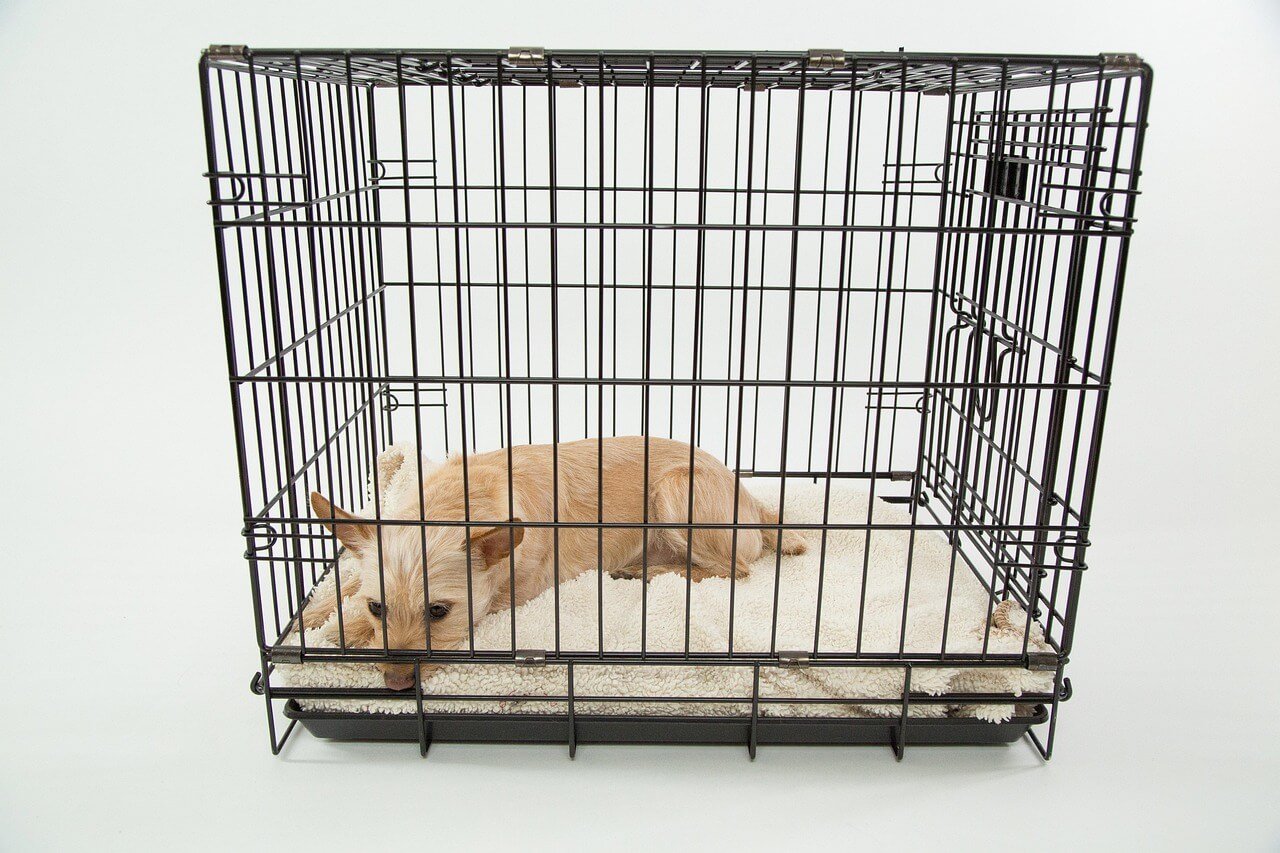Why Is My Dog Peeing in the Crate? Understanding and Solving the Problem
If you’ve ever found yourself cleaning up a puddle (or worse) from your dog’s crate, you’re not alone. Many pet owners face this frustrating issue, and it can leave you wondering what went wrong. After all, crates are supposed to be a safe haven for dogs—a cozy den where they feel secure and comfortable. So why does your furry friend keep peeing in their crate? Whether you’re dealing with a puppy still learning the ropes or an adult dog who suddenly started this behavior, understanding the root cause is key to solving the problem. In this blog post, we’ll explore the reasons behind this behavior, offer practical solutions, and help you create a positive crate experience for your dog.
Common Reasons Why Dogs Pee in Their Crate
Dogs don’t pee in their crates out of spite or rebellion. There are several underlying reasons that could explain this behavior. Below are some of the most common causes:
Puppyhood and Lack of Bladder Control
Young puppies have small bladders and limited control over when they need to go. Even if they want to hold it, their bodies may not cooperate yet.Crate Size Is Too Big
If the crate is too spacious, your dog might see one corner as a bathroom area. Dogs naturally avoid soiling their sleeping space, but this instinct only works if the crate is appropriately sized.Medical Issues
Urinary tract infections, bladder stones, or other health problems could make it difficult for your dog to hold their bladder.Stress or Anxiety
Dogs experiencing anxiety or stress may lose control of their bladder. This can happen if they associate the crate with negative experiences.Lack of Proper Potty Training
If your dog hasn’t been fully house-trained, they might not understand that peeing inside the crate is unacceptable.
Understanding these potential causes will help you address the issue more effectively. Remember, patience and consistency are essential when working through this challenge.
How to Prevent Your Dog from Peeing in the Crate
Preventing your dog from peeing in the crate requires a combination of training, environmental adjustments, and addressing any underlying issues. Here are some actionable steps you can take:
Choose the Right Crate Size
Make sure the crate is just big enough for your dog to stand up, turn around, and lie down comfortably. If it’s too large, consider using a divider to create a smaller space.Establish a Consistent Potty Schedule
Take your dog outside at regular intervals, especially after meals, naps, and playtime. Consistency helps them learn when and where it’s appropriate to relieve themselves.Reward Good Behavior
Praise and reward your dog every time they eliminate outside. Positive reinforcement encourages them to repeat the desired behavior.Limit Water Intake Before Bedtime
If your dog tends to pee in the crate overnight, try reducing their water intake a couple of hours before bedtime.Monitor for Signs of Discomfort
Watch for behaviors like frequent squatting, whining, or straining. These could indicate a medical issue that needs attention.
By implementing these strategies, you can set your dog up for success and minimize accidents in the crate. Remember, progress takes time, so stay patient and persistent.
Check this guide 👉Why Does My Dog Pee on My Bed? Best 7 Expert Tips!
Check this guide 👉How to Clean Dog Pee from a Mattress: Best 7 Expert Tips!
Check this guide 👉Understanding Dog Peeing in Sleep: Best 7 Expert Tips!

Preventive Measures | Training Tips |
|---|---|
Schedule regular potty breaks | Use verbal cues like “Go potty” |
Provide adequate crate size | Reward calm behavior in the crate |
Monitor hydration levels | Gradually increase crate time |
Clean accidents thoroughly | Avoid punishing for accidents |
Consult a vet for health concerns | Practice crate training daily |
Tips for Making the Crate a Positive Space
Transforming the crate into a welcoming and comfortable area can significantly reduce the likelihood of accidents. Here are some tips to help you achieve this:
Introduce the Crate Gradually
Allow your dog to explore the crate at their own pace. Start by leaving the door open and placing treats or toys inside to create positive associations.Use Calming Scents
Spray a pet-safe calming spray or use a lavender diffuser near the crate to help soothe your dog’s nerves.Provide Comfortable Bedding
Add soft blankets or a plush bed to make the crate inviting. Ensure the bedding is easy to clean in case of accidents.Play Relaxing Music
Soft, calming music or white noise can help drown out stressful sounds and create a peaceful atmosphere.Avoid Using the Crate as Punishment
Never send your dog to the crate as a form of punishment. This can create negative associations and increase anxiety.
By making the crate a pleasant and stress-free zone, your dog will be less likely to view it as a place for accidents.
Additional Strategies to Address Crate Accidents
If the problem persists despite your efforts, consider these additional strategies to address the issue:
Consult a Professional Trainer
A certified dog trainer can provide personalized advice and guidance tailored to your dog’s specific needs.Reevaluate Feeding Times
Adjusting meal times can sometimes help regulate your dog’s bathroom schedule.Increase Exercise and Mental Stimulation
A tired dog is less likely to have accidents. Incorporate more physical activity and mental challenges into their daily routine.Try Crate Training Again
If crate training was rushed initially, start over with a slower, more methodical approach.Consider Alternative Solutions
In some cases, a different confinement option, such as a playpen, might work better for your dog.
These strategies can complement your existing efforts and help resolve the issue once and for all.
Additional Tips for Crate Training Success
Crate training is an ongoing process that requires attention to detail and a focus on your dog’s individual needs. Here are some tips to ensure success:
Start with Short Sessions
Begin by closing your dog in the crate for just a few minutes at a time. Gradually increase the duration as they become more comfortable.Use High-Value Treats
Reward your dog with their favorite treats when they enter the crate willingly. This creates a strong positive association.Avoid Rushing Progress
Every dog learns at their own pace. Pushing too quickly can lead to setbacks, so be patient and let them adjust naturally.
By taking these steps, you can build a solid foundation for successful crate training and minimize accidents over time.
Signs Your Dog May Need a Break from the Crate
While crates are a helpful tool, they shouldn’t be overused. Over-crating can lead to stress and behavioral issues. Watch for these signs that your dog may need a break:
Excessive Whining or Barking
Persistent vocalization may indicate discomfort or anxiety about being confined.Destructive Behavior
Chewing or scratching at the crate can signal frustration or distress.Loss of Appetite
If your dog refuses to eat meals near or inside the crate, it could mean they’re associating it with negative feelings.Accidents Despite Training
Frequent accidents might suggest the crate is being used for too long or at inappropriate times.Visible Signs of Stress
Panting, pacing, or trembling while in the crate are clear indicators of discomfort.
Recognizing these signs early can help you adjust your approach and prevent further issues.
Fun Ways to Make Crate Time Enjoyable
Turning crate time into a positive experience can reduce resistance and encourage your dog to view it as a happy place. Here are some creative ideas:
Hide Treats Inside
Scatter small treats or kibble around the crate for your dog to discover. This adds an element of fun and excitement.Introduce Puzzle Toys
Interactive toys that dispense treats can keep your dog mentally engaged while they’re in the crate.Rotate Toys Regularly
Switch out toys every few days to keep things fresh and interesting for your pup.Incorporate Snuffle Mats
Place a snuffle mat inside the crate to encourage natural foraging behavior and provide enrichment.Play Soothing Sounds
Classical music or nature sounds played softly in the background can make crate time feel more relaxing.
By incorporating these fun elements, you’ll transform the crate into a space your dog looks forward to spending time in.
FAQ
Why does my dog keep peeing in their crate?
There are several reasons, including lack of bladder control, crate size being too large, medical issues, stress, or incomplete potty training. Identifying the cause is crucial for finding a solution.
How do I stop my dog from peeing in their crate?
You can prevent this by ensuring proper crate size, establishing a consistent potty schedule, rewarding good behavior, and addressing any underlying health or emotional issues.
Could a medical problem be causing my dog to pee in the crate?
Yes, urinary tract infections, bladder stones, or other health issues could be contributing factors. Consult your veterinarian to rule out medical causes.
Should I punish my dog for peeing in the crate?
No, punishment can increase anxiety and worsen the problem. Instead, focus on positive reinforcement and creating a calm environment.
How long does it take to train a dog not to pee in the crate?
The timeline varies depending on the dog’s age, temperament, and the severity of the issue. With consistent effort, improvements can often be seen within a few weeks.
Building a Happy and Accident-Free Crate Experience
Dealing with a dog who pees in their crate can be challenging, but it’s a solvable problem with the right approach. By identifying the root cause, implementing effective training techniques, and making the crate a positive space, you can help your dog overcome this behavior. Remember, patience and consistency are key—your furry friend is learning, and setbacks are part of the process. With time and effort, you’ll create a crate environment that feels safe, comfortable, and accident-free for your beloved companion.
Understanding Cryptosporidium in Cats: Best 7 Expert Tips! – Spot symptoms, treat safely, and stop parasite spread in your home.
Understanding Cryptosporidium in Dogs: Best 7 Expert Tips! – Learn symptoms, treatment & prevention for this stubborn gut parasite.
Understanding Syringomyelia in Cats: Best 7 Expert Tips! – Recognize signs, manage pain, and support your cat’s neurological health with vet-backed guidance.
Understanding Syringomyelia in Dogs: Best 7 Expert Tips! – Expert insights on symptoms, MRI diagnosis, pain management & quality of life.





